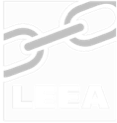A-Z Terms
Accuracy
The closeness of a measurement to a standard or true value.
Calibration
The process which assigns display readings under known and controlled conditions and then verifies correctness of the assignment.
Capacity
The rating or working limit of the instrument.
Compression
A force pushing equally from two directions in the same axis.
Design Factor
An industry term denoting theoretical reserve capability. Usually calculated by dividing the catalogue stated ultimate load by the catalogue stated working load limit. Generally expressed as a ratio, for example 5 to 1 (5 : 1).
Divisions
The size of the increment when moving from one electronic digit (or mechanical marker) to the next. Almost always a multiple of 1, 2 or 5. Divisions = Capacity / Resolution.
Excitation
The voltage inputted to a load cell.
Force
A push or pull that one body exerts on another. Some forces include gravity, spring, adhesion, friction, magnetic and impact.
Full-scale capacity
See capacity.
Load
Another term to describe force or torque.
Nominal Breaking Strength
The published catalogue design strength of a product.
Proof Load
The specific load applied in performance of the proof tests.
Proof Test
A non-destructive load test made to a specific multiple of the rated load of the product.
Recalibration
The process of comparing an instrument against a load standard and adjusting if readings are outside tolerance.
Repeatability
The consistency of readings when a constant load is applied and removed multiple times.
Reproducibility
The consistency of readings with different operators when all other test conditions are the same.
Resolution
The number of increments between no load and full scale capacity. Resolution = Capacity / Divisions.
Safety Factor
The theoretical reserve capability of a product displayed as a ratio ie 7:1, which is determined by dividing the breaking strength by the rated working load.
Shackle
The common forged hardware bow and pin connected to a dynamometer.
Signal
The voltage output of a load cell.
Shock Load
Any condition of rapid lift, sudden shifting of load or arrest of a falling load.
Torque
A force applied a distance away from an axis of rotation. Torque = Force * Distance.
Tension
A force pulling equally from two directions in the same axis.
Ultimate Load
The load at which the item being tested fails or no longer supports the load.
Ultimate Safety Factor
The amount an instrument may be overloaded without physical separation of the load supporting elements. Expression examples: 5:1 or 500%, both mean five times the instrument capacity.
Working Load Limit (WLL)
The maximum combined static and dynamic load in pounds, kg or tonnes that should be applied to the product in service.
Zero
The reference point at which the measurement starts. Loads above this point will be positive and loads below this will be negative. The interval can be extended if customers find the adjustments are small compared to their standards.



